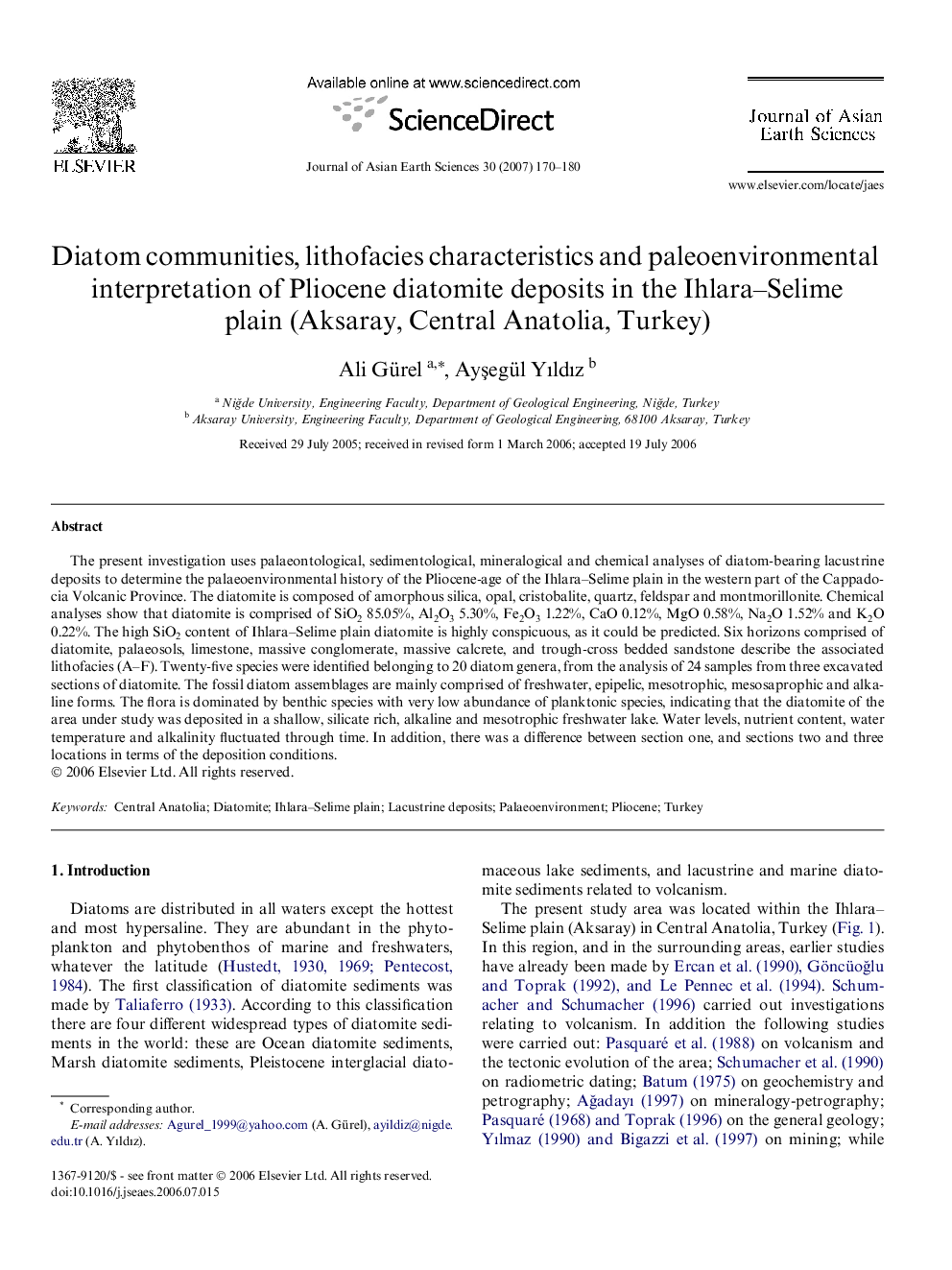| Article ID | Journal | Published Year | Pages | File Type |
|---|---|---|---|---|
| 4732381 | Journal of Asian Earth Sciences | 2007 | 11 Pages |
The present investigation uses palaeontological, sedimentological, mineralogical and chemical analyses of diatom-bearing lacustrine deposits to determine the palaeoenvironmental history of the Pliocene-age of the Ihlara–Selime plain in the western part of the Cappadocia Volcanic Province. The diatomite is composed of amorphous silica, opal, cristobalite, quartz, feldspar and montmorillonite. Chemical analyses show that diatomite is comprised of SiO2 85.05%, Al2O3 5.30%, Fe2O3 1.22%, CaO 0.12%, MgO 0.58%, Na2O 1.52% and K2O 0.22%. The high SiO2 content of Ihlara–Selime plain diatomite is highly conspicuous, as it could be predicted. Six horizons comprised of diatomite, palaeosols, limestone, massive conglomerate, massive calcrete, and trough-cross bedded sandstone describe the associated lithofacies (A–F). Twenty-five species were identified belonging to 20 diatom genera, from the analysis of 24 samples from three excavated sections of diatomite. The fossil diatom assemblages are mainly comprised of freshwater, epipelic, mesotrophic, mesosaprophic and alkaline forms. The flora is dominated by benthic species with very low abundance of planktonic species, indicating that the diatomite of the area under study was deposited in a shallow, silicate rich, alkaline and mesotrophic freshwater lake. Water levels, nutrient content, water temperature and alkalinity fluctuated through time. In addition, there was a difference between section one, and sections two and three locations in terms of the deposition conditions.
